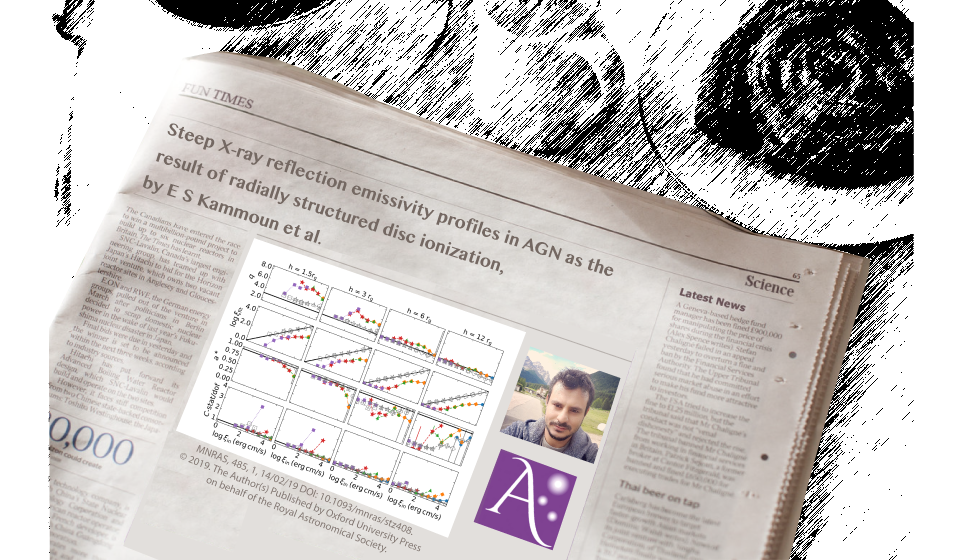By Elias Kammoun
In the currently accepted paradigm, active galactic nuclei (AGN) are thought to be powered by accretion of matter onto a central supermassive black hole of mass MBH ∼ 106−9 M⊙, through an accretion disc. The X-ray emission (in non-jetted AGN) is thought to be originated by Compton up-scattering the disc UV thermal photons off hot electrons making the so-called ‘X-ray corona’. The emission from the corona is emitted isotropically in the rest frame of the corona. Thus, part of it will be emitted in the direction of the observer, and another part will irradiate the accretion disc. In the latter case, the radiation will be reprocessed by the disc and can be re-emitted in the direction of the observer. This reprocessed emission, usually referred to as ‘reflection component’, is characterized by a series of emission lines in the soft X-rays (below ~ 2 keV), an Fe Kα line at ~6.4 keV and a broad component peaking at ~20-30 keV (the so-called ‘Compton hump’). The exact geometry of the corona is still an open question. However, several pieces of evidence are suggestive of a compact corona located within a few gravitational radii away from the black hole. For that reason, the corona has been often approximated by a point source located on the rotational axis of the black hole, the so-called ‘lamp-post model’.
Within the context of the lamp-post model, the illumination profile of the disc by the corona will be dictated by general relativistic effects, namely light bending and gravitational redshift. Thus, the closer the source is to the black hole, the more the innermost parts of the disc will be illuminated with respect to the outer regions. As a consequence, the ionization of the accretion disc will follow a well-defined radial profile of the illumination assuming the constant disc density. This assumption is expected to be a more realistic scenario compared to the constant disc ionization which would require very steep decrease of the density with radius to compensate the steep decrease of the irradiation. However, common models used to fit AGN spectra often assume a constant ionization of the disc. Several results in the literature, using these models, succeed in describing the current data revealing the presence of a strong illumination of the innermost regions of the disc, usually parametrized by steep emissivity profiles of the disc in the applied models. This result is solely attributed to the close position of the corona with respect to the black hole. In this work, we performed spectral simulations using X-IFU/Athena and showed that such steep emissivity profiles can be not only due to the close proximity of the corona to the black hole but also due to the radial ionization profile of the disc, naturally expected for such a corona geometry. While the different models cannot be distinguished by the current data, the high spectral resolution of X-IFU will allow us to test whether these models will be able to describe the observations by searching for any significant deviations from the constant-ionization models. This would give us strong hints on the local emissivity of the disc, thus on the geometry of the corona.



